All images via Shutterstock
There is little doubt our oceans are rising and cities will go under. It is no longer an issue of if but when. No one can predict exactly when, however, based on simple elevation maps, we can predict which major world cities are most likely to be underwater first.

Methodology
Climate Central created the Coastal Risk Screening Tool, an interactive map that allows users to view maps by risk area. We used the “water level” map to demonstrate the conservative estimate of 1.5 meters (5 ft). Some predictions put sea levels at much higher rates as we go towards the year 2100, even up to 2.5 meters if nothing is done to slow greenhouse emissions.
1.5 meters is a realistic estimate that will most likely occur within the next 80 years. This scenario is possible given current projections, global temperature rise, and inaction by major global political and industry leaders.
We used Euromonitor to identify 36 of the most visited cities in the world that will be affected by sea-level rise. Using the maps generated for these cities, we identified the major tourist attractions at risk for being fully or partially submerged within the identified zones that will be affected by sea-level rise.
We ranked these 36 cities by population in order to highlight the most at risk destinations that will have the highest displacement of life as we know it. As mentioned, in just these 36 cities, over 226,000,000 will be directly impacted in the coming years.
9 popular tourist destinations that will be underwater first
We can see tourist destinations already struggling under the increasing water level rise and the damage caused by frequent flooding. Venice is an easy example of a tourist destination experiencing significant and worsening strain from frequent flooding.
1. St. Mark’s Basilica – Venice, Italy
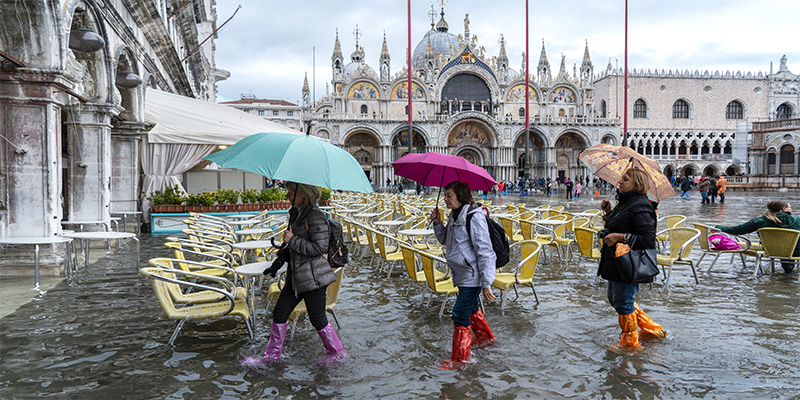
Venice’s St. Mark’s Basilica has already suffered serious flood and water damage. Despite efforts to introduce a flood barrier system, St. Mark’s Square was damaged in 2020 when the flood barrier was not used, demonstrating that even when there are infrastructures in place to prevent the effects of the climate crisis, they are imperfect and will only solve some of the problems.
2. Waikiki Beach – Honolulu, Hawaii
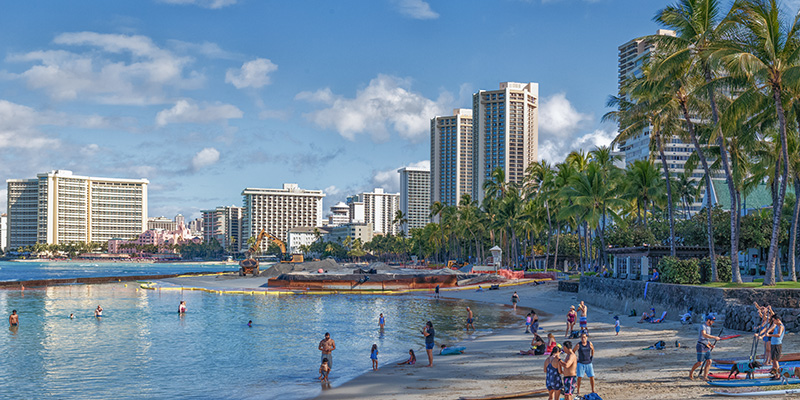
Popular tourist destination Waikiki Beach in Hawaii is already struggling with the rising sea levels and requires further protection against increasing coastal erosion. 13 miles of Hawaiian beach have already disappeared in the last century. Their current attempts at replenishing beaches with imported sand are expensive and temporary measures.
3. Miami Beach, Florida
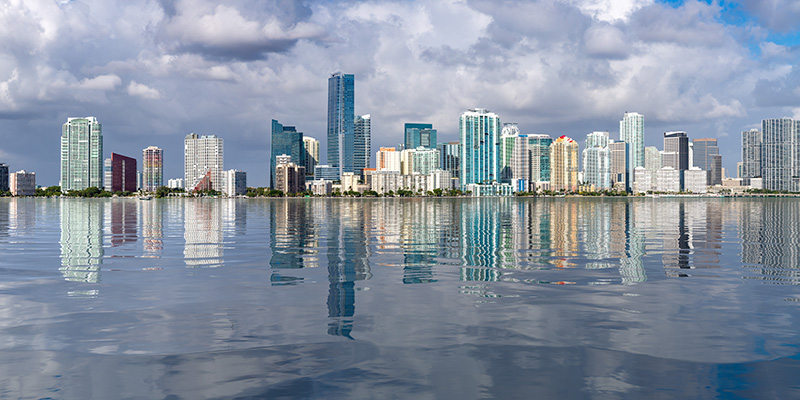
The state of Florida is investing $4 billion dollars in preventing further damage, in particular to Miami Beach, a popular tourist destination with almost 1,200 homes currently at risk of flooding. In fact, flooding is becoming an annual occurrence in this region.
4. Easter Island, Chile
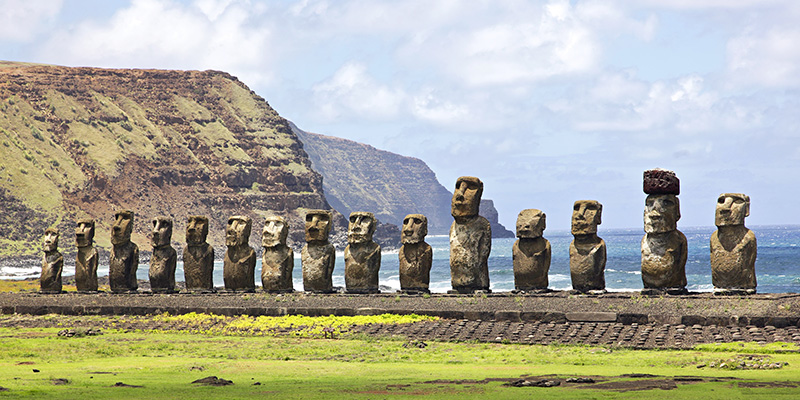
According to UNESCO, the famous Easter Island and its iconic Moai statues are gravely at risk from sea-level rise and rainfall. The island is already undergoing significant erosion and the rising waves inch closer to the heritage site every year.
5. Maldives
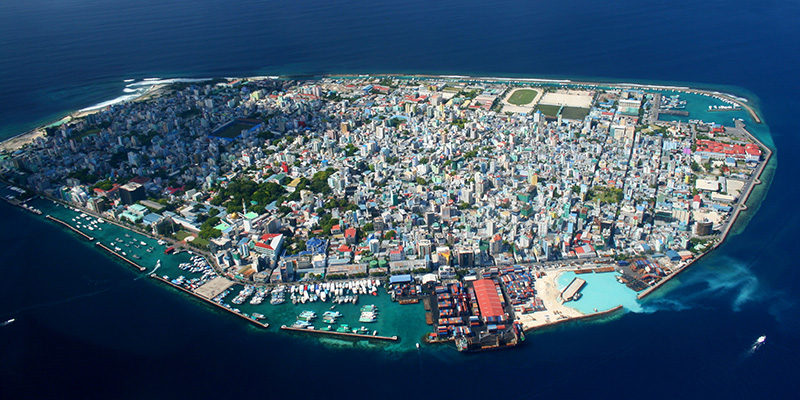
Over 90 islands in the Maldives already experience flooding each year and they are projected to lose 80% or more of their islands in the next three decades. Plans are already being made by the local government to purchase land in other countries as an insurance for relocating the Maldivian population if necessary.
6. Wadden Sea, Netherlands, Germany, and Denmark
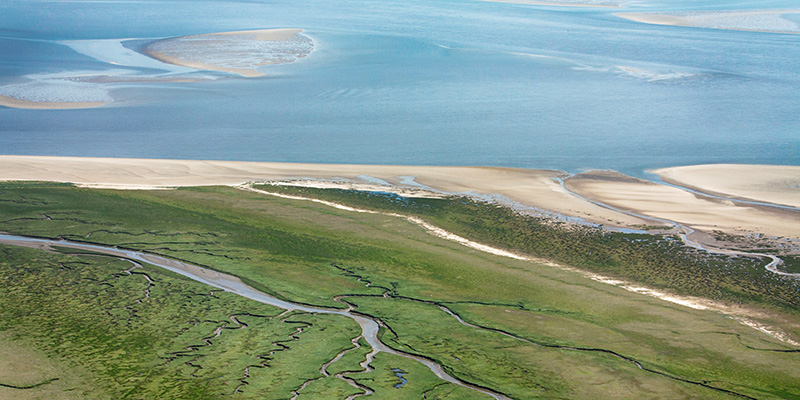
This famous European UNESCO Heritage site is visited by millions of people each year. The myriad plant and animal species are at risk from sea-level rise and erosion, which will cause significant damage. Efforts are being made to prevent this from happening.
7. Eifel, Germany
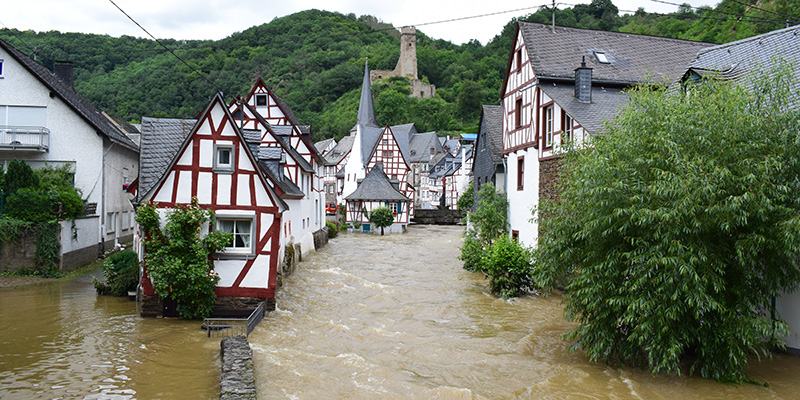
Although Eifel is not on the coast, overflowing rivers are also subject to major climate change catastrophes. As an example, the Eifel region which is located in Germany’s epicenter of wineries and wine festivals, was hit with massive flooding in 2021 that leveled buildings and ruined businesses. Over 220 people died in Germany and Belgium during these floods.
8. Key West, Florida
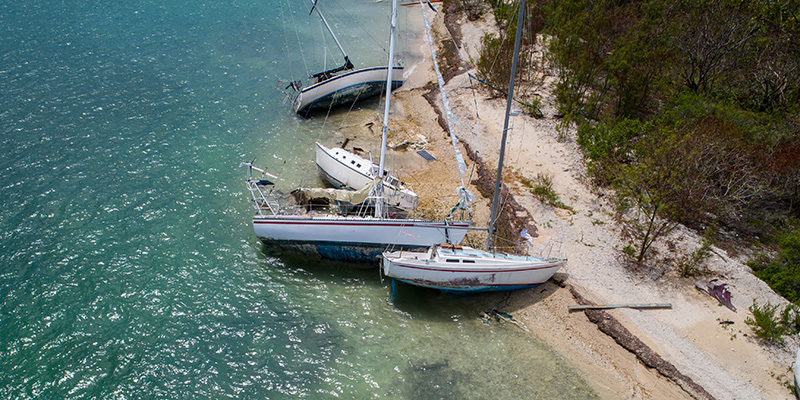
Florida’s famous Key West already has invested in massive infrastructure and relocation projects before untold damage is done. Experts are estimating that parts of Key West will be underwater by 2040, and the money it would cost to prepare for this is in the billions.
9. Statue of Liberty, New York City
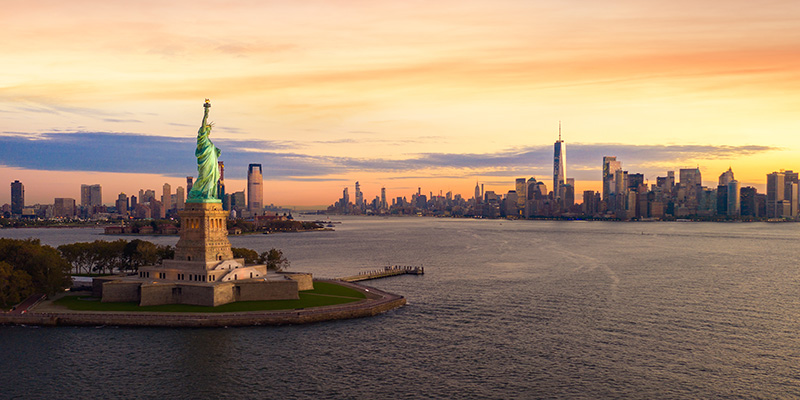
New York City is experiencing increasing frequency and severity of floods, receiving the city’s first flash flood emergency in recorded history in November 2021. This is a problem that New York is structurally not prepared for. Among its most iconic tourist attractions, the Statue of Liberty was massively damaged during Hurricane Sandy and is at further, immediate risk of damage from rising sea levels.
Why are rising sea levels important?
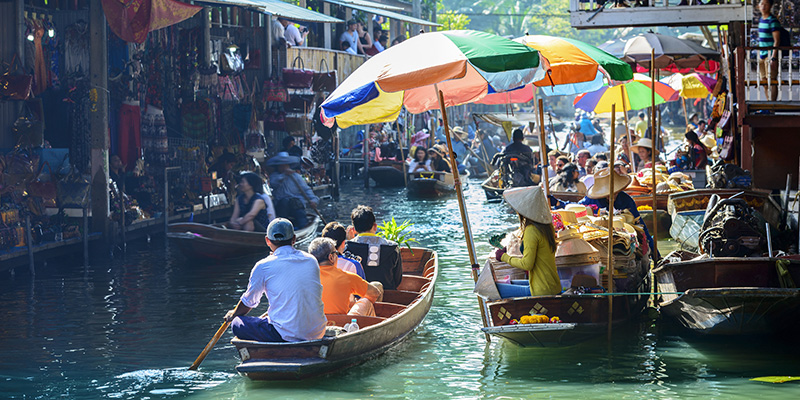
Floating Market in Bangkok, Thailand
According to the United Nations, approximately 10% of the world population (or 790 million people) live on the coastline. Many of the world’s biggest cities have evolved along the coasts of the world. Historically, these coastal cities have prospered due to the ease of trade and commerce. These economic hubs are also some of the most populated cities which puts millions of inhabitants at risk. An estimated two-thirds of cities with over 5 million people are located in threatened coastal regions.
Coastal erosion is a major threat without even factoring in the increased natural disaster impacts like hurricanes or King tides. This means that cities will face major cataclysmic event prior to being fully submerged permanently.
There are numerous heavily populated sinking cities like Mumbai, Shanghai, NYC, and Miami at risk. With a population of 10 million, Jakarta is considered by some to be “the fastest-sinking city in the world” and is projected to be “entirely underwater by 2050.” In December, 2021 Jarkarta was again submerged with parts of the capital 2.7m (9ft) underwater.
While some cities are proactively working on coastal management, others are struggling to commit to a plan, like Bangkok. The Thai government has failed to implement any action towards preventing massive issues related to their precarious situation and is receiving criticism from climate scientists. Some predictions put Bangkok underwater by 2050.
Land loss is not the only concern
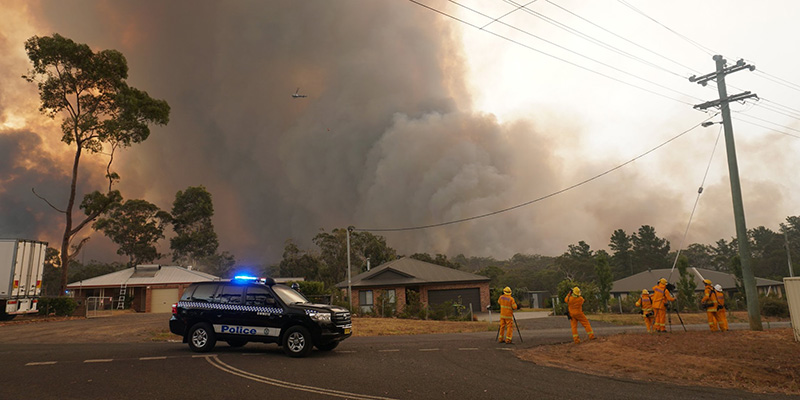
Bushfire in NSW, Australia
Sea level rise is a major issue of concern, but adding to this is the increase of natural disasters that accompanies a global rise in temperature. Droughts, wildfires, hurricanes, and tropical storms are expected to in. crease not only in frequency but also in intensity.
Animals are also being impacted by increasing global temperatures as natural living places are disrupted or no longer inhabitable, which hugely impacts biodiversity and their ability to survive in their natural habitats. The extinction of animal species is actually further harming plant seed disbursement, which in turn harms natural climate adaption.
What’s being done to mitigate the impact of rising sea levels?
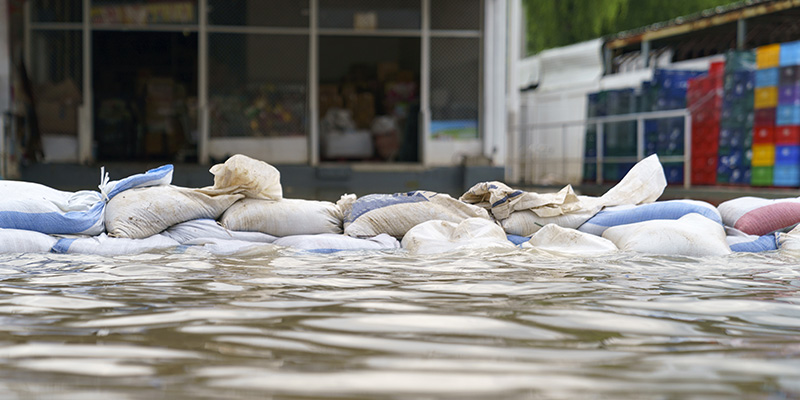
Sandbags are at best a temporary solution for flood defense
The impact of rising sea levels will vary depending largely on the ability by local governments to recognize the problem early enough and have the resources to mitigate severe damage. For example, Jakarta is in the process of constructing a $40 billion-dollar sea wall to stem the tide. Additionally, the government has passed a law allowing for the capital to be moved from Jakarta to an undeveloped jungle tract on the neighboring island of Borneo.
The United States Geological Survey is currently working on a coastal landscape risk assessment survey of the northeastern region of the United States to (eventually) make recommendations about how to address the climate crisis.
In the possible solution section lower in our article we share some information about the successful projects The Netherlands have been conducting for decades.
Some city, state, and country responses to sea-level rise:
“Sea Level Wise” – Virginia Beach, Virginia
Climate Adaptation and Hazard Mitigation Plan – Alameda, California
The Great Wall – Eko Atlantic, Nigeria (though this is arguably doing more harm than good)
De Zandmotor – South Holland, Netherlands
Bangladesh Delta Plan 2100 – Bangladesh
Hudson River Storm Surge Barriers – New York City, New York (proposed)
Sea Level Rise Action Plan – San Francisco, California
Like the island nation of Kiribati, some nations literally have nowhere to go and are already preparing their people for mass migration. There isn’t enough money or land for alternative options, and the government is buying property in other countries to move its people to when the inevitable happens. Tuvalu is vanishing within the next couple of decades.
But even the most proactive countries cannot completely prevent the effects of sea-level rise on their populations. Preventative measures will not unilaterally avoid the devastating effects of a global rise in sea temperature, especially when some politicians are still hesitant to even call extreme weather changes “climate change”. In fact, trillions of dollars have already been spent in response to natural disaster events and this will only increase as the calamities grow in frequency and severity.
The loss of major attractions
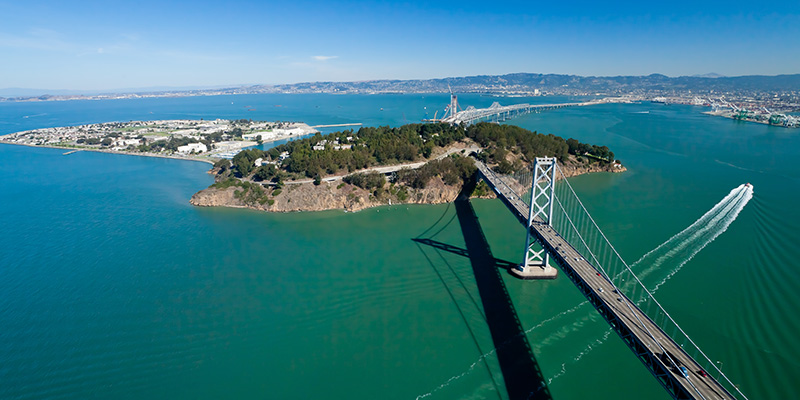
Treasure Island, San Francisco
Even as we discuss the erosion of coastlines, the destruction of cities, the loss of life, and the untold financial strain of the climate crisis, it can still be very hard for many to conceptualize exactly how serious the problem is. Our infographic aims to show the effects in maps based on credible data, not just in numbers and figures.
Here are some examples of famous attractions that will be either submerged completely or irreparably damaged by the rising sea level:
Hong Kong Disneyland – Hong Kong, China
Tower of London – London, England
Palm Jumeirah and Palm Jebel Ali – Dubai, UAE
9/11 Memorial – New York City, New York
Battery Park – New York City, New York
St. Mark’s Square – Venice, Italy
Sydney Opera House – Sydney, Australia
The Little Mermaid – Copenhagen, Denmark
Treasure Island – San Francisco, California
Waikiki Beach Walk – Honolulu, Hawaii
Centraal Station – Amsterdam, Netherlands
Canton Tower – Guangzhou, China
Possible sea level rise solutions
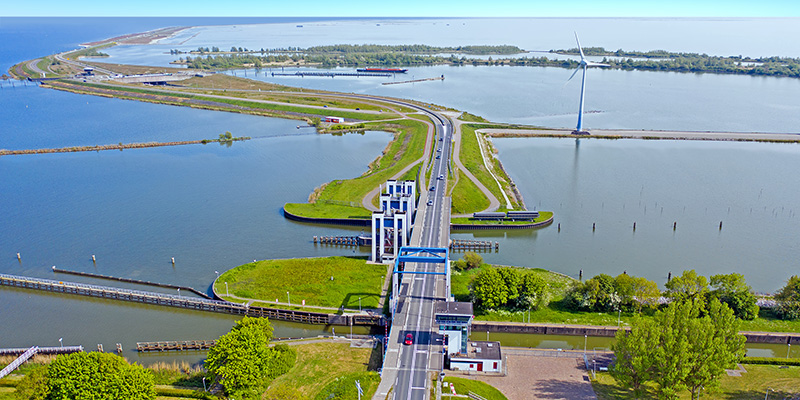
Dyke between Enkhuizen and Lelystad in The Netherlands
According to NASA, the NOAA, and other science advocacy groups, it’s not too late to slow or prevent much of the devastating effects of climate change.
In the meantime, we can learn a lot from how the Dutch have been handling this problem for decades. The Dutch Delta Works is one of the seven wonders of the modern world and has been keeping the Netherlands above sea level with its network of dams, dikes, levees, and other flood prevention systems beginning in the 1950s.
Check out these resources regarding what we can do as civilians, and how we can lobby politicians to address the climate crisis and prioritize coastal management programs:
Coastal Risk Screening Tool
National Oceanic and Atmospheric Administration
Climate.org
World Heritage and Tourism in a Changing Climate
NASA Sea Level Change Projection Tool
Connecting Delta Cities
United Nations Climate Change
Data Sources
Climate Central – Coastal Risk Screening Tool
Climate.gov – Global Sea Level
Intergovernmental Panel on Climate Change – 2021 Report
~ Matthew H. Nash

Matthew H. Nash is Co-Founder and Lead Researcher of San Francisco-based insurance and social research start-up “The Swiftest.” He is spearheading the research department focusing on social issues such as climate change, animal rights, biodiversity and other important topics for the 21st century.
 Greenroofs.comConnecting the Planet + Living Architecture
Greenroofs.comConnecting the Planet + Living Architecture
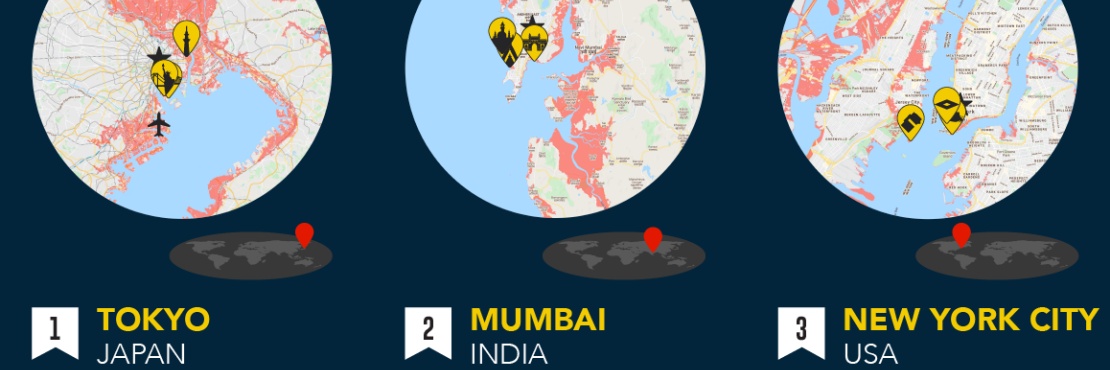




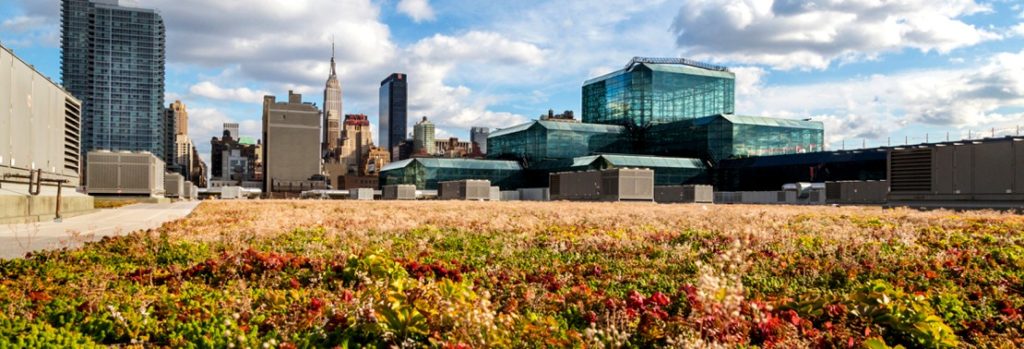




Colin Dempsey
One solution is to sacrifice the lower floors and live in the higher floors of high rise buildings and use boats to get around until things can be sorted out better
Does Manhattan Ever Flood? – Bescord
[…] via […]
lap_abc
Of course Manhattan will flood! What kind of question is that? The issue is when. The current topology of NYC and Long Island was carved out by retreating glaciers 15,000-18,000 years ago. Staten Island was cut off from Brooklyn only 13,000 years ago (www.nytimes.com/2018/06/05/science/how-the-ice-age-shaped-new-york.html) That’s not so long ago in human terms. Indigenous people were living in the NYC region for at least 13,000 years (www.nysm.nysed.gov/exhibitions/ongoing/first-peoples). But at scale of 1000’s of years the main issue is ice, while at the scale of 100’s of years the isduec is sea water. So will you see NYC flooded? Probably not, but your grandchildren will certainly see some flooding. Worst case melting of Antarctic and Arctic ice sheets means your great-great-great-grandchildren seeing parts of NYC permanently under water. Well, not “permanently,” of course. Based on the Earth’s rotational wobble and historical trends of plate tectonics, the next ice age should begin in ONLY 1,500 years! Growth of Arctic and Antarctic ice should cause global sea levels to start falling. The peak should occur in 80,000 years, at which point NYC may be buried under glaciers again, but ironically current global warming caused by humans may delay that by several thousand years.
Is California Sinking Into The Ocean? – Bescord
[…] via […]
How Much Will The Water Rise In The Next 100 Years? – Bescord
[…] With a population of 10 million, Jakarta is considered by some to be “the fastest-sinking city in the world” and is projected to be “entirely underwater by 2050.” In December, 2021 Jarkarta was again submerged with parts of the capital 2.7m (9ft) underwater. via […]
Is NJ weather changing? – Snappy1
[…] https://www.greenroofs.com/2022/03/02/these-36-world-cities-will-be-underwater-first/ […]
Zikko
cool!